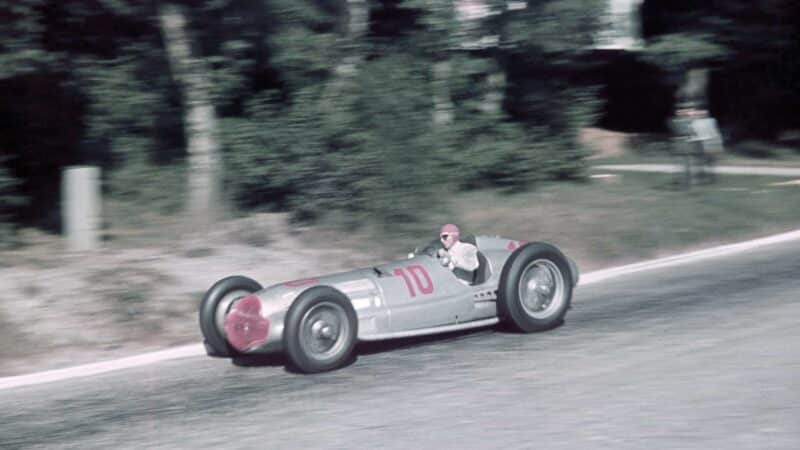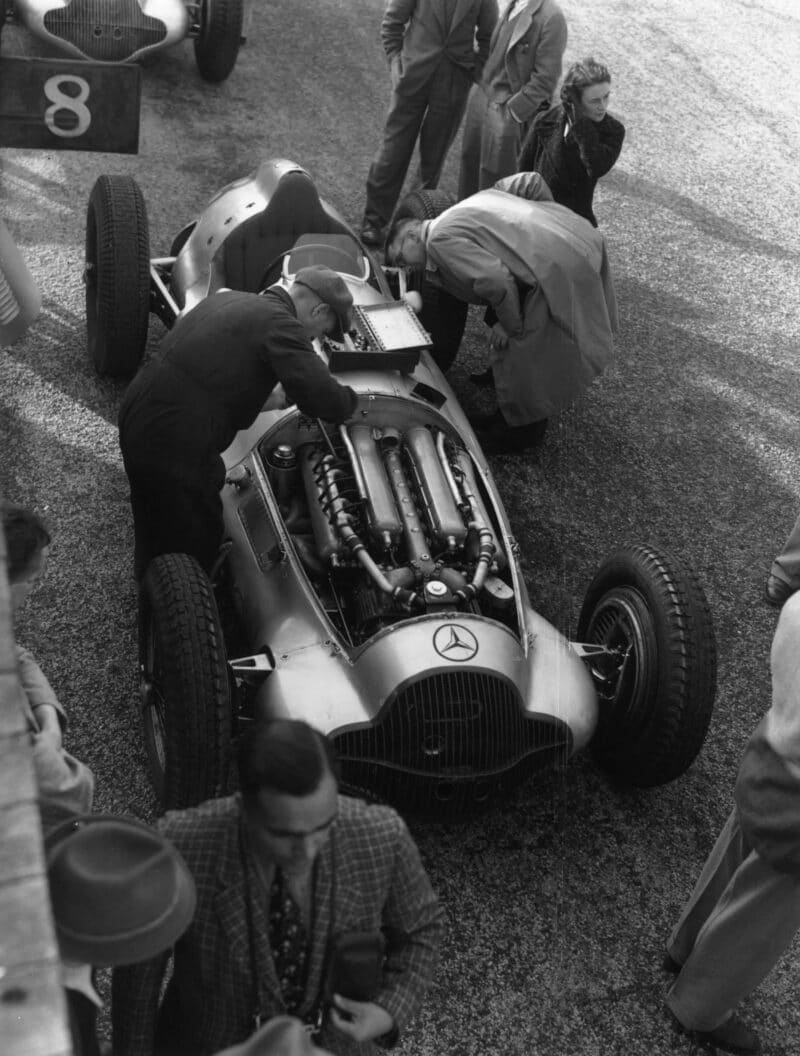The Silver Arrows Era: How Mercedes-Benz and Auto Union Redefined Racing
In 1999, Motor Sport published a celebration of the all-time Great Racing Cars. This issue was packed with voices and opinion around some of the best competition machinery in history. Of course, we began with the W154

Dominant – that’s the word to describe the W154 (sometimes called 163) that engineer Rudolf Uhlenhaut fielded to contest the 1938 and ’39 grand prix seasons. In the hands of Rudi Caracciola and Hermann Lang the car took victory after victory while other racing nations – France, Italy, Britain – were left gasping in its eye-stinging wake.

Manfred von Brauchitsch in the 1938 Swiss GP, running with distinctive red grille
Once again a rule change intended to calm soaring speeds had backfired. After battles between Alfa Romeo and Bugatti in the opening years of the 1930s it was the Germans who had grabbed the reins and hitched ever more horses to their wagons, both Auto Union and Mercedes-Benz conjuring huge power from complex machines which trampled over the grand prix and hillclimb seasons and astonished British spectators at Donington. Legendary team manager Alfred Neubauer presided. With Alfa Romeo having forged the single-seater path with the Tipo B, blazing one final time at the 1935 German GP when Tazio Nuvolari defeated the home teams, Ferdinand Porsche’s Auto Unions proved that a rear engine gave unbeatable traction, but suspension design was only slowly shifting towards the ‘stiff chassis, soft springs’ realisation, and these brutal machines were brutes to handle – unless you had the lightning reactions of the brilliant Bernd Rosemeyer. Between the two silver-liveried marques trophies accrued and lap records tumbled. Rivals scrapped over the leftovers.
“Between the two silver marques, trophies accrued and lap records tumbled”
Previously the rules had only said “keep it to 750kg”. Which designers did – by fitting the lightest chassis with the biggest engines, offering staggering power only matched in Formula 1 by the turbos of the 1980s – 550bhp for Auto Union’s supercharged 6-litre V16, 595 from the blown straight-eight in the Mercedes. Controlling body CSI sought to put the brakes on for ’38 with a 3-litre blown/4.5 unblown cap and a sliding scale of weight limits to give the little guys (and the non-Germans) a chance. No such luck. With their immense technical abilities, access to exotic metals and political and financial backing both German makers went straight to the biggest/heaviest end of the equation and arrived with supercharged V12s that simply blitzed the opposition. At Stuttgart talented engineer Uhlenhaut packed 48 valves, a Roots supercharger and nine oil pumps into his complex new motor, angling it so the driver sat alongside instead of on the propeller shaft, giving it as low a profile as the rear-engined opposition. Opening the batting with 425bhp, the season would see it rise to 475 horses. Auto Union, reeling from losing Rosemeyer in a speed-record crash early in the year, recruited Nuvolari to learn its rather unusual ways, although the D type was a more manageable machine than its sire.

Mating a huge engine to the lightest possible chassis circumvented the new rules and gave rise to Mercedes and Auto Union’s dominance.
Though a tad shorter in wheelbase, chassis-wise the W154 wasn’t so different from the previous and hugely successful W125, a nickel-chrome oval-tube ladder frame continuing with De Dion rear suspension for good traction and double wishbones and torsion bars supporting the front wheels, all tightly wrapped in a sleek, wind tunnel-tested alloy body. One plus was Mercedes’ efficient hydraulic shocks, whereas AU clung onto simple friction versions for too long – just what you don’t need with a tail-happy car, narrow tyres and variable road surfaces.
Like today the 154 burned an exotic fuel brew: methanol, nitromethane and acetone that would leave your eyes streaming if you stood near. And for every gallon inhaled through the supercharger the car would cover less than two miles. Onboard tankage came to 62 gallons, some of it above the driver’s legs. Barring a hiccup on the 1938 debut, when a Delahaye pinched the Pau event, Caracciola and Hermann Lang carved up the season, Rudi collecting his third European title. And one of those victories fell to Britain’s Richard Seaman, who triumphed in the works team’s home GP at the Nürburgring. Only Nuvolari had an answer, scoring two wins in the Type D AU.
Development continued for 1939, with two-stage supercharging and a longer, lower nose – and so did the victories, except that now it was Lang in charge, topping the Pau, Belgian and Swiss GPs and the Eifelrennen, Caracciola taking the German prize as Nazi officials looked on below swastika flags. But there was tragedy too: Spa had claimed the life of Seaman. Interviewed in 1984, Uhlenhaut said that he effectively had no spending limits developing the mighty machine. “I don’t even know what we spent,” he recalled. But the resulting racing car, the culmination of endless research and testing by the huge Stuttgart combine, would prove to be the peak of pre-war grand prix engineering.
